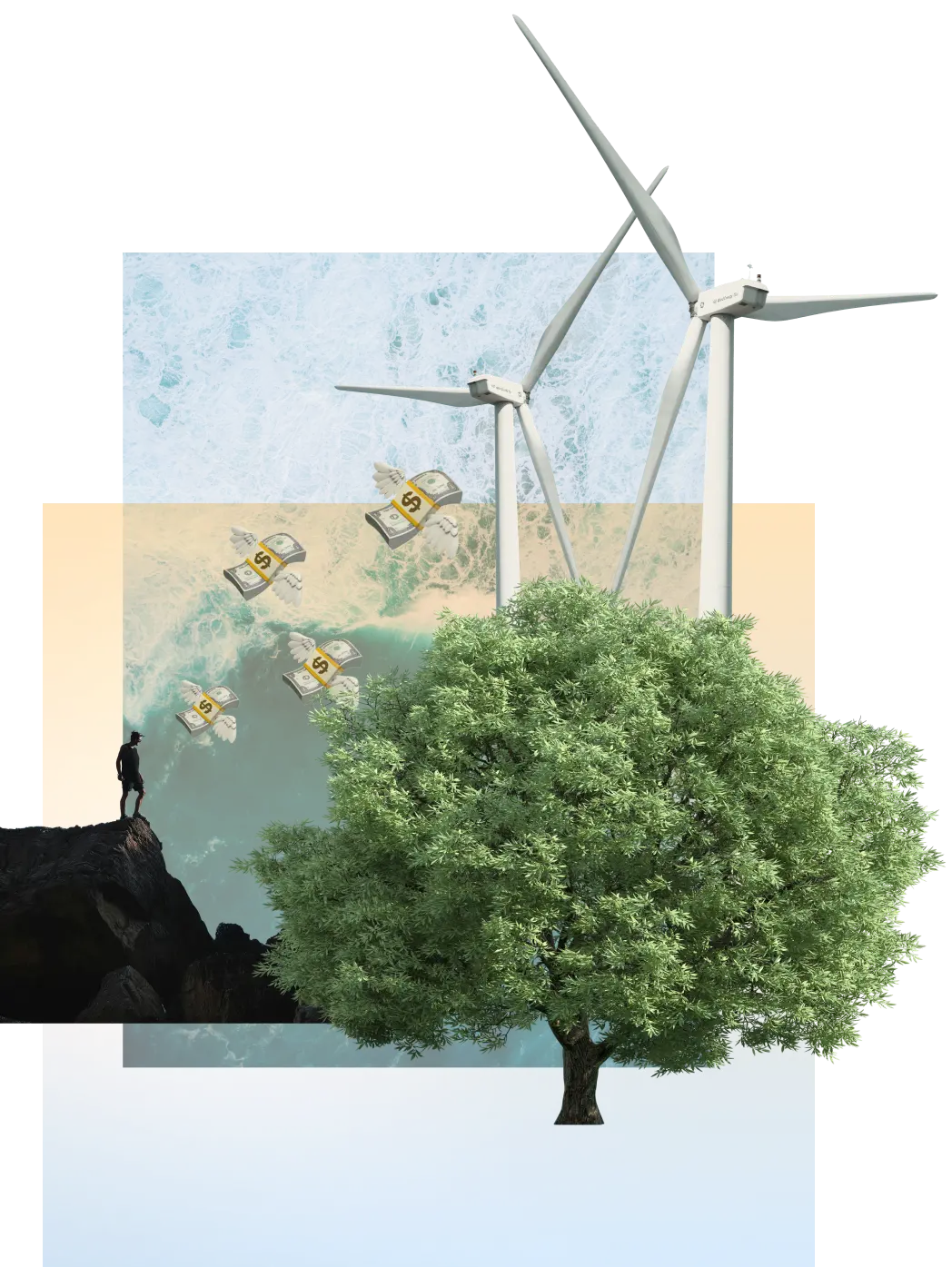Researching Environmental Nonprofits

First off, if you’re here you are both in good company and ahead of the game. You already know the cause areas you’re passionate about: the environment and climate change. Same! We think these are the most important areas to focus our collective attention on now and long-term, because if humanity manages to destroy the planet, then nothing else matters. Gen E is here to help prevent that from happening by supporting initiatives that keep our natural resources clean and plentiful, our wildlife protected, our forests standing, and our communities healthy.
When it comes to researching environmental nonprofits, initially it can feel like a daunting task. The nonprofit sector is huge with over 1.8M US charities, an estimated 65K+ of which are categorized as Environment & Animals. Woof. Not to mention, there are a lot of problems to solve out there, and the solutions can be just as nuanced and complex as the problems themselves.
And if you really want to drill down on the environmental programs, methods, and most impactful orgs to direct your philanthropy, you’re looking at many, many hours of research. Not that that’s a bad thing – we encourage due diligence. Not to mention, learning about the work these environmental nonprofits do tends to restore one’s faith in humanity. But the fact is, we all have our own tolerance levels when it comes to researching (or not) a thing we want to do or buy, and the same goes for the process of researching and selecting an environmental nonprofit to support.
Some people like getting their hands dirty and digging into the 990’s (the IRS form nonprofits must file annually) looking for financial indicators of efficiency. Others are good with just an endorsement from a friend or celebrity. And by the way, there’s nothing wrong with donating just to get a hit of those feel-good vibes. You do you.
If you’re data-driven, then you’re going to want to search for high-performing organizations that will maximize the impact of your dollars. Impact is a huge topic in and of itself, which we’ll get into in another post. For now, explore our recommended list of resources and see what methodology and indicators of success you gravitate towards.
Saving the world is both an art and a science, so keep an open mind. Impact can’t always be quantified, and you may find it more compelling to see program work in progress by volunteering or visiting a state park. Pay attention to local grassroots initiatives by reading articles, attending climate events, chatting with farmers market vendors and sustainability-minded small businesses. You’ll start learning about smaller local groups that are likely under-funded but doing change-making work to protect your immediate land, water, and the health of surrounding communities.
Once you discover some intriguing nonprofits, we absolutely encourage spending the time getting to know them. Sign up for their mailing lists, follow them on Twitter, join a town hall call or educational webinar, volunteer with them. We find it empowering to immerse ourselves in the environmental work of these great organizations, as it reminds us of the importance in supporting them.
One day you’ll wake up and realize you’ve got a pretty good grasp of this stuff. You might even become that friend who your other friends go to for environmental nonprofit advice.
Our current resource list to help you research environmental nonprofits:
The Obvious:
The Nonprofit’s Website – these can be great knowledge banks plus you should get to know who you’re investing in; sign up for their newsletter while you’re at it – in time you’ll have a much clearer sense of the key areas of focus for each org, and how they take action. Also follow them on social media.
The Gold Standards:
Charity Navigator – you’ve likely seen this evaluator’s rating system logo on a nonprofit’s website (0-4 stars); they rate charities based on financial health, accountability, and transparency – not necessarily on results; you can see active programs and financial support allocated.
Guidestar – basically a huge database housing all public info about nearly every nonprofit; good place to search for a specific org and dig into their 990’s.
CharityWatch – this watchdog is keenly focused on financial efficiency and maximizing effectiveness of each dollar donated.
The Data Seekers:
Founders Pledge – well-researched reports that identify the true impact-makers.
ImpactMatters – a newer charity evaluator whose approach focuses on quantifying impact; so far they’ve only evaluated tree planting within the Environmental sector, and admit that actions like system change via legislation or advocacy can be too difficult to quantify.
Cause Research:
Sustainable Development Goals (SDG’s) – good to know what causes have global priority; the official UN blueprint for an ideal world.
Drawdown – as they call it ‘the most comprehensive plan ever proposed to reverse global warming’; solution-based by sector to draw down greenhouse gas emissions, this is a must for anyone interested in climate solutions.
GivingGreen – still in beta, focuses on where to direct funding specifically to reduce GHG emissions by researching short and long term solutions.
Trusted Environmental News & Education:
Grist – independent news outlet working towards ‘a planet that doesn’t burn and a future that doesn’t suck’; if you want just one place to get climate news, make it Grist.
NYT Climate – subscribe to this free newsletter for top notch climate reporting plus solutions you can get behind.
Bloomberg Green – get the daily newsletter to stay on top of innovation, climate finance, and overall climate reporting with a business slant.
National Geographic Magazine – feel like a kid again learning about the wonders of the world, feel like an adult with your newfound smartness; amazing photography, and the most intricate and impressive graphics that bring data to life, ever.



